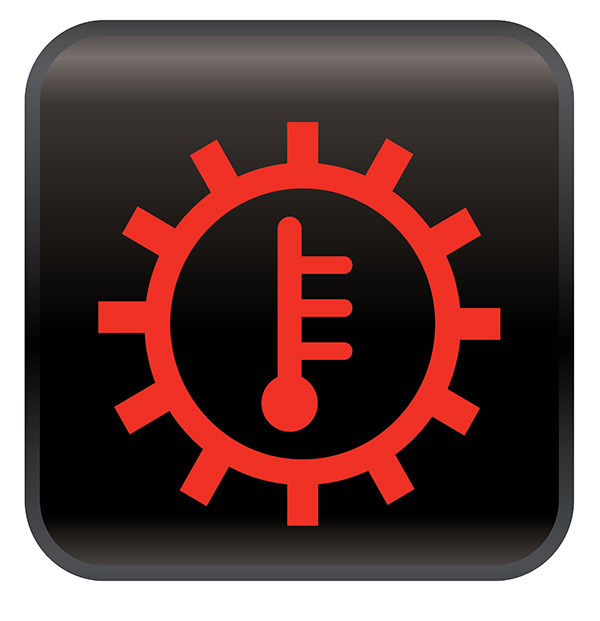
Your transmission is one of the most important parts of your vehicle, working behind the scenes to transfer power from the engine to the wheels. When it’s running properly, shifting gears feels effortless. But when a transmission overheats, it can lead to performance problems, expensive repairs, or even complete failure.
The problem is that most drivers don’t realize their transmission is overheating until it’s too late. By the time you notice sluggish shifting, slipping gears, or a warning light on the dash, the damage may already be done. So, what’s causing the heat buildup, and how can you stop it before it becomes a bigger issue?
How Overheating Affects Your Transmission
A transmission operates best when its temperature stays within a safe range of 175°F to 200°F. If the temperature rises above this range, transmission fluid begins to degrade, losing its ability to properly lubricate and cool the system. As a result, metal components experience increased friction, leading to premature wear and failure.
When temperatures climb too high, transmission fluid can also oxidize and burn. This often results in a dark, burnt-smelling fluid that no longer protects the transmission from excessive heat and wear. If overheating continues, key components like the clutch packs, solenoids, and seals can break down, eventually leading to a total transmission failure.
Ignoring an overheating transmission can lead to repair costs that climb into the thousands of dollars, particularly if a full rebuild or replacement is necessary. The sooner you identify and address the issue, the better chance you have of saving your transmission and your wallet.
Common Causes of Transmission Overheating
A transmission can overheat for several reasons, ranging from driving habits to mechanical failures. Identifying the root cause is crucial for preventing further damage and keeping your transmission in peak condition.
Low or Contaminated Transmission Fluid
Transmission fluid plays a critical role in cooling and lubricating the internal components. If fluid levels drop too low, friction increases, heat builds up, and overheating occurs. This can be due to leaks in the transmission pan, cooler lines, or seals.
Even if fluid levels are fine, old or contaminated transmission fluid can also lead to overheating. Over time, transmission fluid breaks down and collects debris, making it less effective at regulating heat. If you haven’t had a transmission fluid change in a while, it may be time to check its condition.
Towing and Carrying Heavy Loads
Towing trailers, boats, or carrying heavy cargo puts added stress on the transmission, forcing it to work harder than usual. The extra weight generates more heat, increasing the risk of overheating—especially if your vehicle wasn’t originally designed for heavy towing.
Vehicles that frequently tow should be equipped with an external transmission cooler. These coolers help reduce transmission temperature by providing additional cooling capacity beyond what the radiator alone can handle.
Stop-and-Go Traffic and Hard Driving
Frequent braking, quick acceleration, and stop-and-go driving in heavy traffic can cause transmission temperatures to rise. Every time a gear shift occurs, heat is generated, and in urban environments with frequent stoplights and congestion, the transmission rarely gets a chance to cool down.
Similarly, aggressive driving habits, such as rapid acceleration or sudden braking, can force the transmission to work harder than necessary, increasing strain on its components. Smooth driving with gradual acceleration and braking helps keep transmission temperatures in check.
Cooling System Malfunctions
Many vehicles rely on their radiator to help regulate transmission temperature, and if the cooling system isn’t working properly, heat can quickly build up. A failing radiator, a clogged transmission cooler, or damaged cooling lines can prevent transmission fluid from cooling down, leading to overheating.
Routine radiator and cooling system maintenance is essential, especially for vehicles that operate in hot climates or demanding driving conditions.
How to Prevent Transmission Overheating
While overheating is a serious issue, preventative maintenance and smart driving habits can help extend the life of your transmission and keep it running efficiently.
- Check Transmission Fluid Regularly – Make sure levels are adequate and that the fluid is clean and free of burnt smells. If the fluid is dark or dirty, a fluid change or flush may be needed.
- Avoid Heavy Towing Without Proper Equipment – If you frequently tow, install an external transmission cooler to help manage heat buildup.
- Drive Smoothly and Avoid Excessive Acceleration – Allow your transmission to shift at a natural pace instead of forcing quick gear changes.
- Keep the Cooling System in Good Condition – The radiator and transmission cooler play a major role in preventing overheating. If you notice issues with engine temperature or coolant leaks, get them inspected as soon as possible.
- Follow Manufacturer Service Intervals – Your vehicle’s recommended transmission service schedule includes fluid changes and inspections that can prevent overheating and extend transmission life.
When to Seek Professional Transmission Service
If you suspect that your transmission is overheating, don’t wait until it’s too late. Some of the most common warning signs include:
- Slipping gears or delayed shifting
- A burning smell from under the hood
- Transmission warning lights on the dashboard
- Dark or burnt-smelling transmission fluid
- Rough or jerky gear shifts
At Village Transmission & Auto Clinic in Edmonds, WA, our team specializes in transmission diagnostics, fluid changes, cooling system inspections, and full transmission repairs. We’ll pinpoint the cause of your overheating issues and provide the necessary service to keep your car running safely and efficiently.